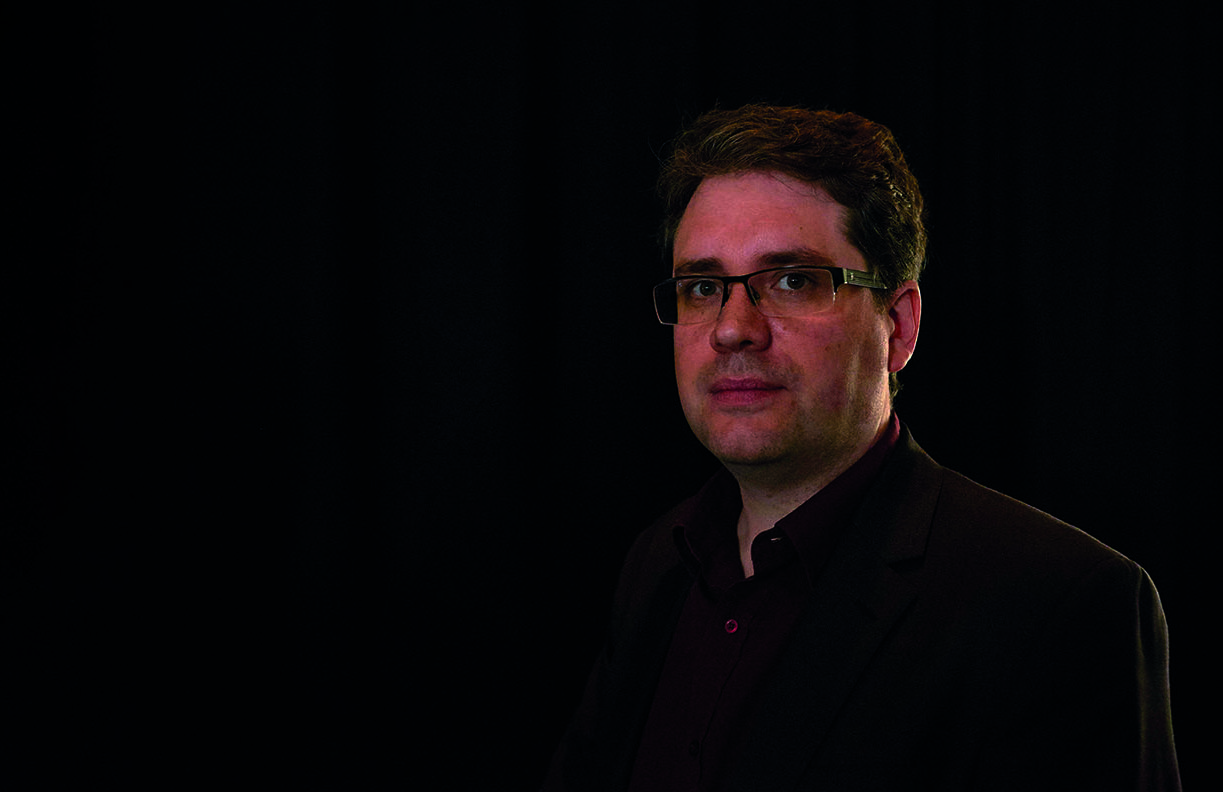Open source secrets
How did Bellingcat beat media giants to revelations about the downing of a Malaysian airline and the Skripal poisonings? Founder Eliot Higgins reveals some of his methods
Even those of us revealing Russian nerve agent assassination programmes have to deal with the frustrations of home-schooling. This is what life is like during the pandemic for Eliot Higgins, founder of online sleuthing outfit Bellingcat.
When I ask him what keeps him awake at night, I expect him to describe threats from the Russian state, online smears following Bellingcat’s work revealing the identity of the assassins behind the poisoning of Sergei Skripal and his daughter Yulia in Salisbury in 2018, or perhaps blow-back from the Bellingcat investigation into the downing of Malaysian Airlines’ MH17 over eastern Ukraine in 2014. But, he says: “To be honest, mostly worrying about my kids’ home-schooling.”
“I just kept unearthing material and worried that if I did not write about it, perhaps nobody would.”
Higgins launched the blog Brown Moses, the forerunner to Bellingcat, in April 2012, fitting it in around work as an administrative officer in Leicester. On the blog, named after a Frank Zappa song, he began analysing videos posted online in Libya and Syria to reveal hitherto unknown details about wars that were becoming increasingly hard for journalists on the ground to access.
“Who had time to go through all the footage from the Syrian conflict flooding the internet?” Higgins asks in his new book. “As it happened, I did.” He calls his approach “dry and forensic… I myself had no personal stake. I just kept unearthing material and worried that if I did not write about it, perhaps nobody would.”
The successes of Brown Moses led Higgins to found Bellingcat two years later. He envisaged it as a place where likeminded researchers, analysts and bloggers could share their work. He didn’t expect they would achieve such prominence so soon.
On 17 July 2014, three days after Bellingcat was launched, Malaysian Airlines’ flight MH17 took off from Amsterdam Airport on its way to Kuala Lumpur. The plane had 298 people on board, many of them holiday-makers. Almost three hours into the flight, the plane crossed over the sunflower fields of eastern Ukraine, where months before a pro-Russian breakaway region had been declared. Just then, something exploded outside the cockpit window. Everyone on board was killed.
Higgins’ description of the search to find out what really happened on that day from his rented office in Leicester (by that point he had quit the day job) reads like something from a John le Carré thriller. He describes how his team of amateur enthusiasts pieced together readily available dashboard camera footage, Google Street View images, crash site photos and conversations uploaded to Russian chat app Zello to build up a convincing case linking Russian military officers to the Buk missile launcher used to shoot down the plane.
This investigation, along with the hunt through leaked Russian databases to find the identities of the men responsible for poisoning the Skripals in Salisbury, forms the dramatic centre of his fast-paced book. Through the narrative, Higgins remains doggedly focused on two things: the power of the collective to unearth hitherto unknown facts, and the quest for truth. His belief in the ability of self-taught internet sleuths to outsmart intelligence agencies is compelling and admirable.
When Higgins began, he tells me he had “no assumption that anyone would trust me – a random internet person, so I was always very transparent about what I was saying, where I was getting those ideas from and the references I was using. Because it was open source material I could share those sources.”
The flipside of this transparency is the fear that malign actors, say a repressive regime, marshalled open-source intelligence in the Bellingcat way to undermine the privacy or safety of journalists, activists or opponents. But, he writes: “I never worried that a bad actor could infiltrate this project. If someone materialised with startling claims of new evidence, I would not blindly publish the work. First, I would evaluate the research on its merits, while checking the personal data trail that the individual had left online, to ensure that was nothing was awry.”
I ask him if he worries that Bellingcat’s transparency could result in publicly available information becoming harder to access in the future. He says that the outcome of this would still be a net good. For example, Bellingcat’s work to track down the hit squad that poisoned Russian opposition politician Alexei Navalny last summer in Tomsk, eastern Russia, partly relied on the use of dozens of databases of information about citizens for sale on the dark web or via corrupt officials.
“No longer can journalists simply rummage through the Rolodex and phone for the opinions of a retired CIA analyst.”
“We are a rare exception that this information is being used as investigative journalism. Usually it is being used by people to keep track on their wives or commit fraud or bad stuff, so if it is shut down then unfortunately it limits our investigations but it also means a lot of people aren’t having their identities stolen, so there is a net good,” he says.
The rise of Bellingcat coincided with the decline in print media and loss of trust in traditional models of foreign correspondents. Higgins writes that information gathering has changed so much to the degree that today’s journalists are negligent if they overlook “the mountains of online evidence” available to them. “Traditional reporting is still irreplaceable, but it is incomplete. No longer can journalists simply rummage through the Rolodex and phone for the opinions of a retired CIA analyst,” he writes. Noted.
Seven years on from its Kickstarter-funded launch, Bellingcat is now a registered charity with a staff of 20 and prestigious affiliations with organisations like the International Criminal Court in the Hague, where Higgins is part of the Technology Advisory Board, and the Human Rights Center at the University of California, Berkeley. It’s funded by the National Endowment for Democracy, alongside a number of other organisations, and makes a third of its income from carrying out workshops around the world – although this revenue stream has been harmed by the pandemic, resulting in a few sleepless nights for Higgins.
In October last year, Bellingcat released a report into Russia’s Novichok chemical weapons programme. The report outlines evidence linking Russian Ministry of Defence scientific institutes with a Russian military unit (29155) linked to poisoning attempts in Bulgaria in 2015, and Sergei and Yulia Skripal in the UK in 2018. Other recent projects include documenting atrocities in Yemen as a result of the Saudi-led war, and revealing the European border force’s complicity in illegal pushback operations to drive away refugees and migrants.
Next, Higgins says Bellingcat will expand its volunteer base, tackling topics like conservation, and creating a TV documentary series on the Russian nerve agent assassination programme, because “it seems unrealistic, like something from James Bond, but it is something that does exist and we have tons of evidence and I think this is a really exciting and interesting story we want to share”.
Growing prominence also means more detractors. In 2018, following the release of its report identifying the GRU officers responsible for the Skripal poisoning, Russian foreign minister Sergei Lavrov accused Bellingcat of being a front for western intelligence services. He is also regularly the target of RT, the Russian state broadcaster. Mary Dejevsky, former Moscow correspondent for The Times, writing for the website Unherd, asked readers: “If Bellingcat wasn’t beholden to anyone at the start, is it now? And even if it isn’t, are there ways in which it has knowingly or not been co-opted?”
In an op-ed on Unherd, he responded: “Allegations of our involvement with the intelligence services are of course false, fuelled by a lack of understanding of our work (despite detailing our process on our website and it being verified by independent Russian media).”

Higgins’ teenage years were bookended by the Gulf War and the invasion of Iraq in 2003. For him, the way the media was “subjugated to the ends of the governments” and involved in pushing for the invasion of Iraq formed his thinking about the need for transparency. And then in 2011, watching the start of the Syrian war, “seeing all of this information coming from the ground” being ignored and meeting activists risking their lives to record atrocities drove him on to say to himself: “OK, what can you do with this?”
But despite his success, he is frustrated about the lacklustre international response to Bellingcat’s revelations, for instance on the Russian assassination programme. “You kind of feel there has to be more of a response than firmly worded statements from various figures,” he says.
“It can come across as a little stringent or cheesy to say we have to stand up for what we believe in, but that is slowly being eroded. You have to look over to America and see what happened on 6 January [when the Capitol building in Washington DC was stormed by angry Trump supporters] to see that it is being eroded because of conspiracy theories, of people believing absolute nonsense.”
A big part of his current mandate involves fighting misinformation and conspiracy theories in all their guises
The UK or EU aren’t perfect democratic societies where all politicians tell the truth, he says, “but things can get worse instead of getting better and things will get worse if society doesn’t ask what our personal roles are in that”.
For Higgins, a big part of his current mandate involves fighting misinformation and conspiracy theories in all their guises. He calls the proponents of these theories members of the Counterfactual Community. He spends a good deal of the book explaining how disinformation operates online via state broadcasters, bloggers and social media networks and algorithms.
I ask him if he agrees with the Twitter and Facebook ban targeting former President Trump after the storming of the Capitol building. It’s a difficult one, he says, because of the importance of free speech, but the tech platforms are complicit in how these people connect
to conspiracy theories.
“You know you click on a flat earth video and you get recommended another flat earth video. You might not click on it, your friend might not click on it but someone will and they will click on another and another and another until they are engulfed in this alternate information ecosystem.”
In the interest of gender parity, I follow up on our interview by asking Higgins how he manages being the father of young children (six and nine) alongside having such a demanding job. “It’s increasingly complex with homeschooling and all the other changes needed to adapt to the pandemic, but fortunately my work schedule is quite flexible, so I don’t need to work 9-5,” he says.
At the end of the interview I tell him about a friend who has an amazing recall for faces, a skill particularly handy when trawling through hours of videos on YouTube and trying to spot someone in a crowd. He says that people like this will be vital for the forthcoming Bellingcat volunteer programme.
“I started my work while I was working as an admin officer and if I can do it then I think anyone can get involved and they might discover they’ve got a new career ahead of them.”
We Are Bellingcat: An Intelligence Agency for the People is published by Bloomsbury

Leave a reply
Your email address will not be published.